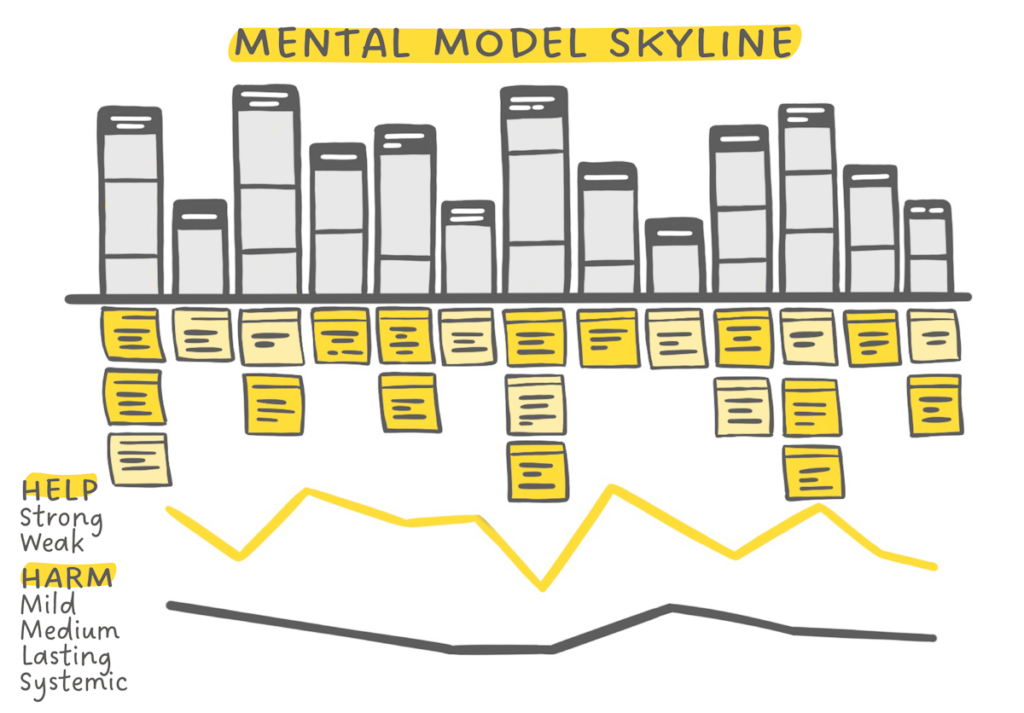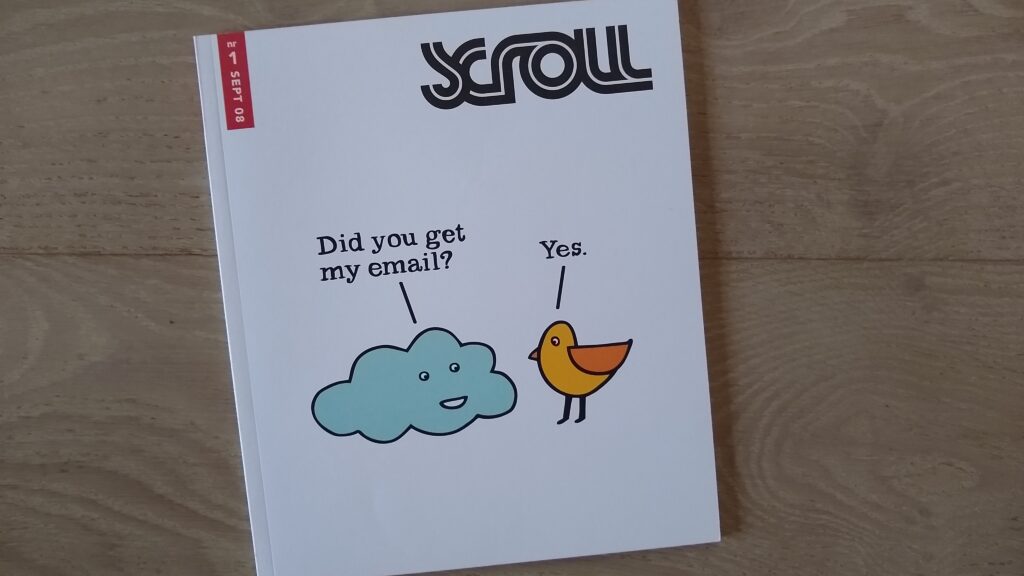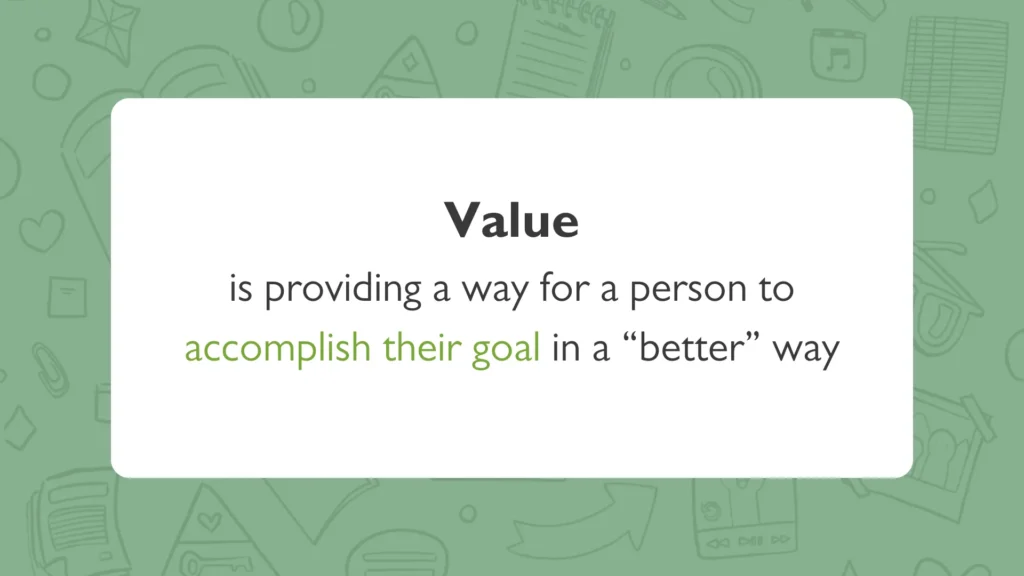Most orgs are good at measuring their solutions & progress
Few orgs measure people’s success at making progress on their own intentions. But this is the real measurement of value.
Scale how you understand individual people using patterns of cognition in a mental model skyline. Frame your evaluative studies by tower and thinking style (rather than by feature and role). Track how well you are helping (or harming) people.

How It Can Work
An org supporting founders and small business owners wants to prove to investors that these people are worth supporting. Watch as the org discovers a surprise in how how well they support founders, and an opportunity to really shift investment into gear.
How It Has Worked
See how orgs have benefited over time. These examples include work that anyone in the community has done with Data Science That Listens. (Some details are anonymized due to intellectual property constraints.)

Bringing Library Service Into Line with Patrons
Libraries have no budget for studies, but lots of access to people who are happy to explain their thinking. We needed this understanding to make recommendations for supporting people better.
Some new service design ideas just came from the words people used like, “Check family account.” We don’t have something called a “family account,” but it is obvious that people think about things in terms of the whole family and not each individual cardholder.

Impact Measurement Framework
Help the whole org understand what the design team is doing to improve the impact of our software for users.
Positive response from audience, citing good leadership and excitement for future projects based on this mental model skyline.

Founding a Startup
Within 10 years we want to have the most diverse portfolio of any venture capital firm.
The variety of founders who gave their time to talk about what kept them up nights attests to this firm’s already established efforts to include demographic diversity. However there were gaps where people from “not the usual universities” were ignored, as were those who had not been at university. And the overall venture capital system was rotten with dystopian scenes from the standpoint of women and people of color. The services the venture capital firm provided its portfolio of founders were to shallow to make a true difference to the problems founders faced. Advice was often misaligned, or purposely meant to wrest a founder’s org into a direction more compatible with the investors’ financial gain. So, there is a lot that can be addressed in the next 10 years.

Access to Stakeholders We Never Had
We are a centralized UX group for the whole organization. Can we get more people interested in our services by showing them something they want to know: how people react to the features over time, as those features progress?
The emotion maps layered on the mental model skyline came out of the usability sessions. For each box or tower in the model, what is the users’ corresponding emotional state? Happy faces and neutral faces and angry faces. Now stakeholders request that we come up with the emotion map for every release! They want a snapshot of this emotional report card as we go from release to release, so they can push a valley up to neutral, if not a peak.

Starting a Small Business
How can we do more to help small business owners protect themselves from risk as the start or grow their business? Are there areas we can provide deeper or new solutions? How well do our current solutions support small business owners?
The team within the org layered quant and qual data on the mental model skyline to see where they had opporturnities to better support the variety of things that were on the minds of small business owners, as well as the thinking style they manifested as they dealt with those things.

Thinking Clearly About Customer Goals
Learn how to better help people protect their business from internet outages and issues.
Rackers are not designing for themselves anymore. They speak about customers from the perspective of the 5 thinking styles, and digging into what seems vague. The first opportunity is go help people forecast their own growth and scale their business technology accordingly.

Hiring People with Disabilities
Changing employers’ perceptions and behaviors around hiring and retaining individuals with disabilities.
While members of our team have worked with employers on these very issues for years, the Mental Model allowed us to revise behavioral audience segments to guide our marketing and outreach: the “Empathetic Problem-Solver” and the “Organizational Implementer,” which are independent of demographic characteristics. This shift in audience segmentation has significant implications for how we choose to approach social marketing.

The Moviegoer Mental Model Skyline
The example used throughout the book Mental Models.
The production company of this exampled used the diagram to focus its attention on improving distribution of its films.

Handle dispatch issues with my fleet
Management told us to go make a new application that will compete with others who are already in the market. They thought we could just do a better job.
The mental model skyline told us that people are pretty well-served in that area already. But it also showed us a whole new area of the business that was completely under-served! So now we’re telling management that a different service will be a stronger bet. We just have to convince them to go for it.

Peoplesoft Research
Qualified sales leads for the org’s enterprise software were at an all-time low. Competition was gaining. The org needed to increase sales.
The research revealed that potential customers were thrown off by an opaque initial experience on the website. Changing the navigation, making the vocabulary consistent with what people were trying to solve, and taking an editorial tone that encouraged viewers to ask questions and reach out to current customers made a 20% jump in qualified leads. That this jump happened in January-February-March, typically the lowest time of year for leads, made the org even happier.








